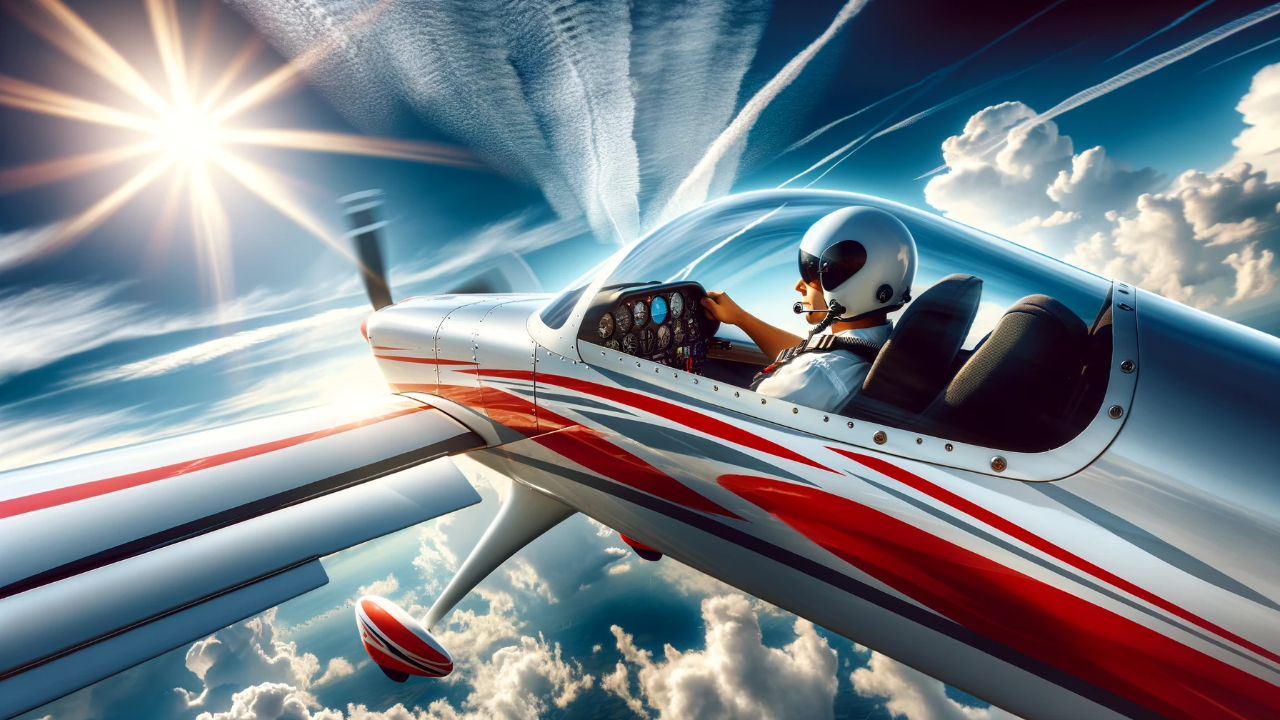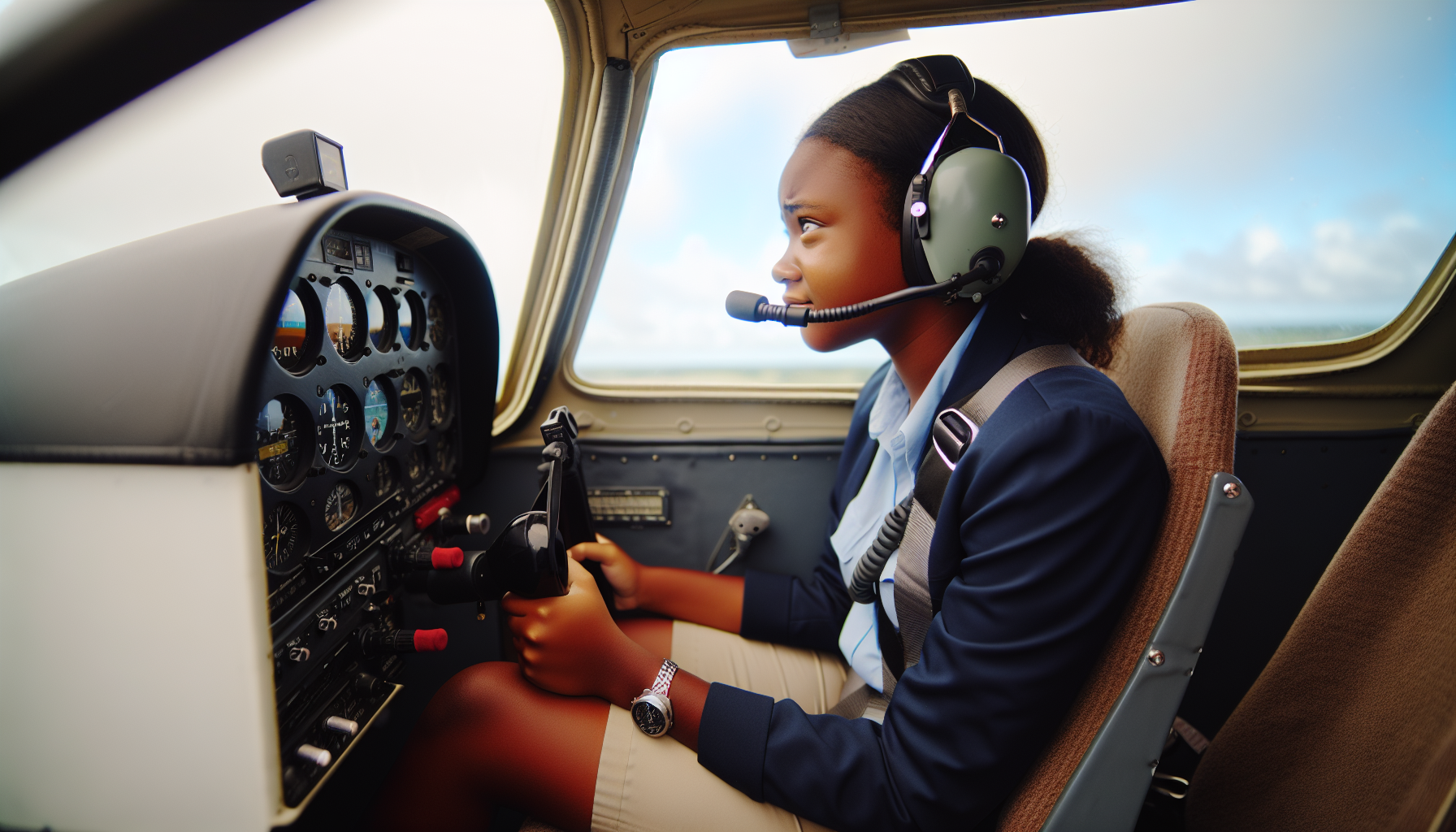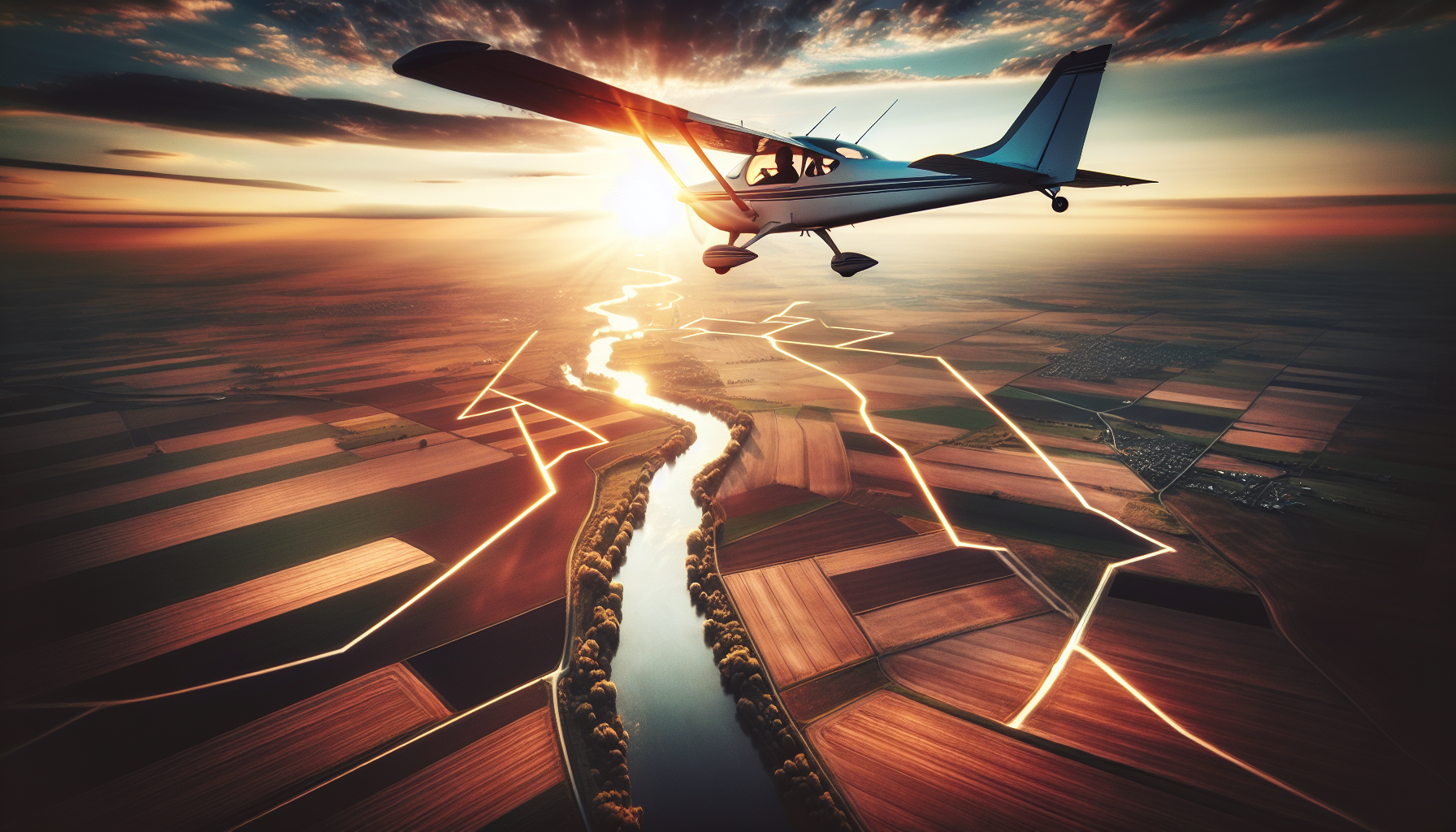Your Ultimate Guide to Earning a Sport Pilot License: Simplified
Feb 01, 2024
Have you ever dreamed of soaring through the skies, feeling the freedom of piloting your own aircraft, but thought it was out of reach? The Sport Pilot License might be your ticket to making that dream a reality. This accessible and cost-effective certification opens the door to the exciting world of flying light sport aircraft for recreational purposes.
Key Takeaways
-
Understand the Sport Pilot License and eligibility criteria.
-
Complete ground school, flight training milestones, and written/practical tests to obtain a certificate.
-
Learn privileges & limitations of the license as well as sport pilot financial aspects & resources for international trainees.
Understanding the Sport Pilot License

Introduced by the Federal Aviation Administration (FAA) as a more accessible pilot certification, the Sport Pilot License aims to increase involvement in recreational aviation by offering a quicker, more affordable path to flying. The Sport Pilot License allows pilots to operate light sport aircraft, a category of smaller, lower-powered aircraft suitable for recreational flying. The FAA issued 200 Sport Pilot Certificates in 2019, highlighting the growing interest in this type of aviation.
Unlike other pilot licenses, such as the private pilot license, the sport pilot certificate does not require an airman medical certificate. Instead, sport pilots can use their valid U.S. driver’s license as evidence of medical competency, simplifying the certification process and making it more accessible to a wider range of individuals.
The Sport Pilot License is ideal for those who want to experience the thrill of flying without the extensive training and medical requirements of a private pilot license. With a focus on recreational aviation, the Sport Pilot License allows pilots to operate light sport aircraft for personal enjoyment and explore the skies with fewer restrictions than student pilots.
Pathway to Your Sport Pilot Certificate

Becoming a sport pilot involves the following steps:
-
Meeting eligibility criteria
-
Completing ground school
-
Completing flight training milestones
-
Passing written and practical tests
The succeeding subsections will walk you through each of these necessary steps to earn your Sport Pilot Certificate.
Meeting the Eligibility Criteria
To be eligible for a Sport Pilot Certificate, you must:
-
Be at least 17 years old (16 for gliders or balloons)
-
Demonstrate proficiency in written and spoken English
-
Hold a valid U.S. driver’s license as evidence of medical competency
This relatively low barrier to entry makes the Sport Pilot License an attractive option for aspiring pilots who may not want to pursue more advanced certifications like the private pilot license.
Language proficiency is an important requirement for obtaining a Sport Pilot Certificate. Pilots must be able to:
-
Read
-
Write
-
Speak
-
Understand the English language
This is to ensure clear communication and comprehension of aviation regulations. While Sport Pilots generally do not need to obtain a medical certificate, there are certain circumstances where it may be required. Ensuring you meet these eligibility criteria is the first step toward obtaining your Sport Pilot Certificate.
The process starts with securing a student pilot certificate by submitting your printed 8710-1 or proof of digital filing to an FAA-designated office or representative. With your student pilot certificate, your progression towards becoming a sport pilot begins.
Ground School and Flight Training Milestones
Before you can take to the skies, you’ll need to complete both ground school and flight training. Ground school covers essential topics such as:
-
regulations
-
aerodynamics
-
weather
-
navigation
-
aircraft systems
-
flight planning
The ground school’s structure and content for sport pilot training might differ based on the flight school or qualified flight instructor. Thus, seeking advice from your chosen flight school or instructor is advised for more detailed information.
To obtain a Sport Pilot Certificate, you’re required to complete a minimum of 20 hours of flight time, which must include 15 hours of dual instruction with an authorized flight instructor, 2 hours of cross-country flight, and 5 hours of solo flight. This level of flight experience ensures you have the necessary skills and knowledge to safely operate a light sport aircraft.
After completing the ground school and flight training, you are ready for the final step in obtaining your Sport Pilot Certificate - passing the written and practical tests. These evaluations measure your comprehension of the ground school material and your skill to safely operate a light sport aircraft.
Passing the Tests
The written examination for the Sport Pilot License tests your knowledge of topics covered in ground school, such as:
-
regulations
-
aerodynamics
-
weather
-
navigation
-
aircraft systems
Resources like the Pilot Handbook of Aeronautical Knowledge can help you prepare for this exam. Once you’ve passed the written exam, you’ll move on to the practical flight test.
The practical flight test, or checkride, is a combination of a verbal and practical examination administered by a designated pilot examiner (DPE) to assess your abilities and knowledge as a pilot. You’ll need to bring your valid driver’s license, medical certificate, and all requisite paperwork to the checkride. Sport pilots are not required to take a checkride for an additional category and/or class rating when flying under sport pilot privileges.
After successfully acing both the written examination and the practical flight test, you are awarded your Sport Pilot Certificate, which allows you to fly light sport aircraft for recreation. With your certificate secured, you are set to relish the skies as a sport pilot.
Navigating the Skies: Privileges and Limitations

With a Sport Pilot License, you’ll have the privilege of flying light sport aircraft within certain safety parameters established by the FAA. Light Sport Aircraft (LSA) are smaller, less complex aircraft with the following specifications:
-
Maximum gross takeoff weight of 1,320 pounds (1,430 pounds for seaplanes)
-
Maximum speed of 120 knots
-
Stall speed not exceeding 45 knots
-
Typically designed for one or two occupants
-
Maximum number of seats in an LSA is two.
Sport pilots are not permitted to fly in certain conditions or situations, such as:
-
Outside the U.S.
-
At night
-
With more than one passenger
-
In low visibility conditions
While there are limitations, the Sport Pilot License still offers a unique opportunity for recreational pilots to enjoy the thrill of flying with fewer restrictions than student pilots.
Bear in mind that the Sport Pilot Certificate does not permit you to acquire additional ratings, unlike other pilot certifications. Nevertheless, the Sport Pilot License continues to be a compelling choice for those mainly interested in recreational aviation and flying light sport aircraft.
Comparing Pilot Certifications
The Sport Pilot License differs from other pilot certifications, such as the Recreational Pilot and Private Pilot licenses, in terms of training, privileges, and limitations. The Sport Pilot License requires fewer training hours (a minimum of 20 hours) compared to the Recreational Pilot (minimum 30 hours) and Private Pilot licenses (minimum 40 hours). This makes it a more accessible option for aspiring pilots who want to fly for fun.
In terms of aircraft types:
-
Sport pilots are limited to flying light sport aircraft.
-
Recreational pilots can fly aircraft with up to four seats.
-
Private pilots have even greater flexibility in the types of aircraft they can operate.
However, the sport pilot certificate has less stringent medical requirements compared to a private pilot certificate. Pilots can use their valid U.S. driver’s license as evidence of medical competency instead of obtaining an FAA medical certificate or an airman medical certificate from an aviation medical examiner.
While the Sport Pilot License offers fewer privileges than other pilot certifications, it remains an attractive option for those primarily interested in recreational aviation. The lower training requirements and reduced medical certification process make obtaining a sport pilot certification a more accessible and cost-effective choice for many aspiring pilots.
Financial Aspects of Becoming a Sport Pilot
Obtaining a Sport Pilot License is more affordable than other pilot licenses like the private pilot license, which can cost around $15,000. The average cost of obtaining a Sport Pilot License ranges from $4,000 to $5,900, including ground instruction costs and examination fees. This lower cost makes the Sport Pilot License a more budget-friendly option for those looking to get into recreational flying.
Flight training costs for a Sport Pilot License encompass ground school fees, aircraft rental fees, and instructor fees. These costs can fluctuate based on the flight school, aircraft type, and instructor rates. Examining and comparing flight schools and instructors is recommended to find the most suitable fit for your budget and training requirements.
Another financial consideration for aspiring sport pilots is the cost of the written and practical exams, which are estimated to be approximately $500. By meticulously evaluating the financial aspects of the Sport Pilot License and considering potential cost-saving strategies, like opting for a more affordable flight school or splitting aircraft rental costs with other students, you can turn your aspiration of becoming a sport pilot into reality within your budget.
Insights for International Trainees
Foreign pilots seeking to train for a Sport Pilot License in the United States must undergo a verification process, which includes:
-
Processing the Verification of Authenticity of Foreign License and Medical Certification, taking approximately 45 to 90 days to complete
-
Checking their visa status
-
Notifying their flight school
-
Registering at the TSA’s AFSP website
-
Waiting for their flight school to complete the necessary steps
International trainees aiming for a Sport Pilot License in the US must have either a valid pilot medical certificate or a current and valid U.S. driver’s license as proof of medical competency. This maintains that foreign pilots meet the identical medical requirements as U.S. trainees.
To train for a Sport Pilot License in the US, international trainees need either an F-1 or M-1 nonimmigrant visa. By understanding the verification process, medical requirements, and visa requirements, international trainees can successfully pursue their Sport Pilot training in the United States.
Preparing for the Sky: Resources and Study Materials
There are numerous resources and study materials available to help aspiring sport pilots prepare for their training and exams. The FAA recommends the Pilot’s Handbook of Aeronautical Knowledge and Airplane Flying Handbook, both of which can be obtained for free from the FAA website. These textbooks cover essential topics that will be covered in ground school and tested on the written examination.
Online platforms, such as ASA's Private Pilot Ground School, include practice exams, study guides, and informative videos. (After purchase, the course and resourses specific to the sport pilot certificate can be selected.)
The FAA provides study materials for Sport Pilot trainees, including:
-
Pilot Study Materials
-
Airplane Upset Recovery Training Aid Revision 2 (PDF)
-
Airmen Education Programs
-
Aircraft Handbooks & Manuals
Leveraging these resources and study materials will equip you well for your Sport Pilot License endeavor.
Summary
The Sport Pilot License offers an accessible and cost-effective path to experiencing the thrill of recreational aviation. Through meeting eligibility criteria, completing ground school and flight training, and passing written and practical tests, you can earn your Sport Pilot Certificate and enjoy the freedom of flying light sport aircraft. With various resources and study materials available to help you prepare, the sky is truly the limit for aspiring sport pilots.
Frequently Asked Questions
How much does it cost to get a sport pilot's license?
The cost of obtaining a sport pilot license is between $4,000 and $6,000 while the cost of a private pilot license is between $9,000 and $17,000.
Is sport pilot license worth it?
The Sport Pilot License is an attractive option for pilots due to its lower cost of operation, lower certification costs, and access to smaller, simpler aircraft. It is worth considering for those looking to become a licensed pilot.
Can you fly a Cessna 150 as a sport pilot?
Yes, you can take your sport pilot training using a Cessna 150 until soloing, however, you cannot solo or do any solo work unless you are in a Light Sport Aircraft.
How much does a sport pilot make?
On average, sport pilots in the US make a salary of $202,180 per year according to the US Bureau of Labor Statistics. Bonuses and other forms of compensation may also be available depending on the job.
What is the minimum age requirement for obtaining a Sport Pilot License?
To obtain a Sport Pilot License, you must be 17 years old or above.
